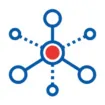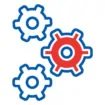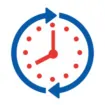Do you track your Customer Acquisition Cost (CAC)? It can account for a large percentage of your marketing budget, so it’s a number worth knowing. Keeping an eye on such expenditures can also help quantify the value of your customer outreach programs, both for new customers and existing accounts.
Depending on the industry you’re in, and whether you’re selling to other businesses (B2B) or directly to consumers (B2C), CAC can really add up. On the other hand, not devoting sufficient resources to these efforts can result in reduced revenues and a lower market share.
Research by the U.S. Small Business Administration (SAB), an agency of the Department of Commerce, suggests that companies with less than 5 million in annual revenue would be wise to set aside between 7% and 8% of gross sales for marketing. Larger businesses with higher revenues may want to weigh the value of each customer or account and invest more where there’s a better potential for greater ROI.
Beyond being able to allocate your marketing budget more effectively, another benefit of tracking CAC is getting the chance to remind your team of the importance of striving for excellence in customer service. It takes a great deal less money to keep a customer than to acquire a new one. To lose a customer through slow fulfillment, poor service, broken promises, etc. is a huge loss both from a monetary and a reputational standpoint.
Using Lean principles to reduce waste, improve efficiencies and ensure better outcomes, your quality of customer service can be favorably impacted and ingrained in your operating practices. To revisit the Five Lean Principles, you can click here to read our article entitled ‘Why Lean should be central to your ERP and corporate culture’.
Using Lean to Collect Data for Customer Service Quality Assurance
No one will argue that great customer service is key to retaining customers and earning their loyalty. Earning repeat business creates a multiplier effect, making each account more valuable, since less time and effort is necessary to gain their patronage. In other words, high quality customer service extracts more value from customers with less activity.
Secondly, and equally as important, customer retention is far cheaper than customer acquisition. Other measurable benefits of endearing satisfied customers is that they refer others to you. As your happy customer base grows, they will be more receptive to other products you offer, resulting in potentially lucrative re-marketing opportunities. Ultimately, your loyal and thoroughly pleased customers serve as a strong competitive advantage because it’s harder for competitors to lure them away from you.
Now that you have leveraged your Lean practices to achieve the gold standard in customer service, how do you maintain that level of quality and build upon it indefinitely? The short answer is by capturing all pertinent data and using it for continuous improvement of the activities and practices surrounding your interactions with your customers.
Here are a few of the ways Attivo All-In-One, powered by SAP Business One, turns the challenging black art of customer service into a predictable, repeatable, and quantifiable part of your operations:
Analyze Your Fill Rate
You can identify your fill rate by calculating the percentage of customer orders that you can ship immediately from stock on hand without placing backorders or missing a ship date. Once identified, compare your current fill rate against the published rate and percentage of on time deliveries. How this data is measured and being able see the degree of accuracy of the measurements are crucial to knowing these metrics are reliable.
Further insights will be provided by understanding the quality provided, in context to the quality of products in demand (Note: this will be covered in an upcoming Lean article).
Measure Order Fulfillment
Knowing the fill rate leads to identifying the current status of order fulfillment to capture on time shipments, delayed or late shipments, and how these factors impact customer satisfaction, order cancelation, re-orders, etc. Again, quantifying the accuracy of the tracking information is important for confident decision-making, improving fulfillment, and addressing unexpected one-time problems or chronic issues which need correction. One obvious approach for identifying problems is to measure the number of complaints (per 100 or 1,000 orders or whatever makes sense for you). As an integral part of fulfillment, it is essential to track and provide feedback to the customer on the status of their order to avoid unpleasant surprises. In the case of B2B sales and orders shipped to distributors, it also empowers them to forewarn their customers about changes in the status of an order.
Another core benefit of Lean is that it ensures the highest possible degree of customer satisfaction by setting a baseline. The current status is available for review and the value stream, which supports customer service functions, makes it possible to clearly identify where improvements can be made. Additionally, by constantly tracking inventory levels as part of the fulfilment of each order, necessary steps can be taken to increase the percentage of those shipped on time and with the correct quantity.
Track and React
How your team uses the information that directly relates to the current state of customer service is just as important as collecting it and disseminating it across stakeholders. Not paying attention to quality of service, or worse, not having an ERP in place to provide data-driven oversight will drive down satisfaction levels and negatively impact revenue.
When asked by management consultants why their organization has failed to take action on such a mission-critical aspect of their operations, a variety of reasons are typically cited:
- Did not understand the importance of measuring customer satisfaction
- Had not considered how customer service could be measured or improved
- Do not have a customer questionnaire or satisfaction measuring outreach in place
- Have not created necessary processes to track complaints, quantify service levels, etc.
- Believe that customer satisfaction is already optimal and see no room for improvement
It goes without saying that these rationalizations are at best misguided, and at worse, can irresponsibly expose the organization to a variety of operational practice failures and performance shortcomings which can damage the reputation of the business and undermine customer confidence. Furthermore, a lack of focus on customer service undermines investments in customer acquisition and accelerates churn, causing a cycle of chasing ever more customers while losing them at a similar rate.
As with all fundamental operational challenges, improving and maintaining customer service begins with a management system capable of furnishing you with relevant data on a real-time basis and delivering the transparency necessary to provide your team with the tools needed to deliver on projections and meet expected benchmarks.
Attivo All-In-One, powered by SAP Business One, provides all the power to plan and schedule customer orders, monitor production on a regular basis, and to adjust and communicate schedule changes before they become major issues. We also include a dashboard view of tools and modules which include MRP, production scheduling and shop floor tracking for minute-by-minute status information and customized alerts to allow planners and schedulers to be proactive in making decisions based on the latest and most relevant data.
In this ongoing Lean Management series, we’ll dive into more detail about how to apply Lean principles and the many ways we use them to support the processes, modules, and functionality of our Attivo-All-In-One ERP solutions.





















